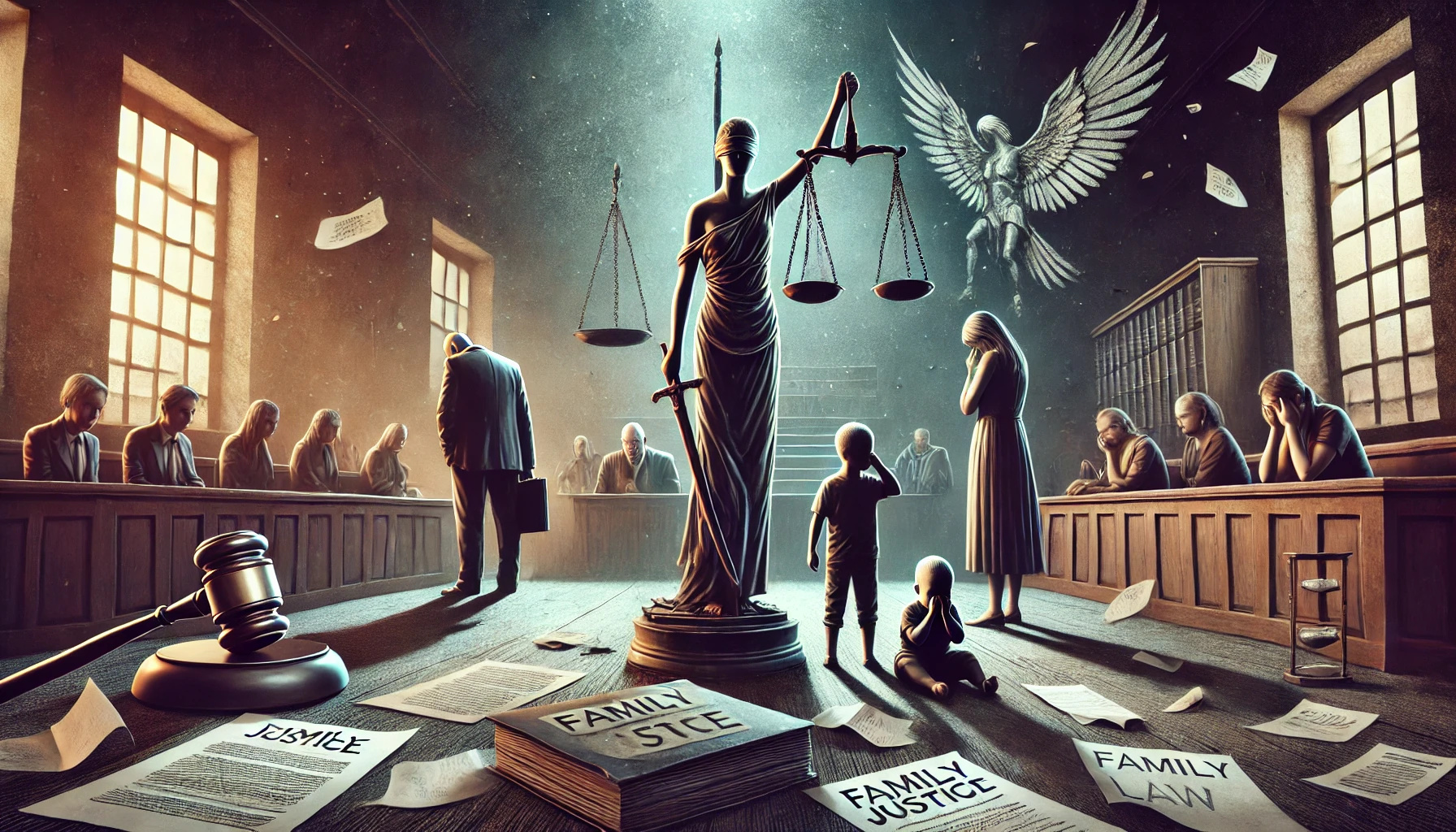Published On: 12 Sep, 2024
Authored By: Dhruv Shrivastava
Prestige Institute of Management and Research, Gwalior
ABSTRACT
This article delves into the intricate relationship of personal laws while attempting a Uniform Civil Code (UCC) in India. It talks about India’s legal pluralism, based on religious personal laws and offers a constitutional blueprint for the UCC. It explains the main features of Muslim and Hindu Personal Laws which reveal their differences as well as discriminatory provisions, with particular emphasis on women’s rights. It moves on to the internal strife and inconsistencies that resulted from legal pluralism, highlighting its detriment.
This article will also examine the hurdles in the path of establishing a UCC due to different religious practices in India, constitutional challenges and educational deficiency among certain segments. It posits that a UCC could become an agent of gender justice by referring to judgements and international mandates. The document also discusses global trends leading to the convergence of legal systems and developments in India, namely the Goan Civil Code, and Uttarakhand Bill, 2024.
INTRODUCTION
The jurisprudential framework that recognizes the coexistence of many legal systems is known as legal pluralism. As a nation that exemplifies unity in diversity, India has consistently upheld the concept of legal pluralism by recognizing the personal laws of various religions.
The Constitution of India serves as the ‘Grundnorm,’ meaning the fundamental norm, to which all personal laws must adhere, ensuring they align with constitutional morality. Nonetheless, a lot of personal laws are discriminatory and go against Article 15’s guarantee of the right to equality.
The Constitution, through Article 44, envisions the Uniform Civil Code (UCC) as a Directive Principle, placing a positive obligation on the state to pursue its implementation.
During the Constituent Assembly Debates, the Muslim community raised concerns that the UCC would be oppressive and infringe upon fundamental rights. In response, K.M. Munshi argued that a uniform and secular legal framework would promote equality. He pointed out the discriminatory nature of personal laws, especially against women, and asserted that religious practices could be confined to areas that do not conflict with public policy.
The existence of various schools of Hindu law, such as ‘Mitakshara’ and ‘Dayabhaga,’ and Muslim schools like ‘Hanafi,’ ‘Shafi,’ and ‘Maliki,’ contributes to inconsistencies and discrimination. A Uniform Civil Code could help resolve these issues by fostering greater uniformity.
PERSONAL LAWS AND UCC
Personal laws in India operate based on the recognition of specific relationships as a source from which several rights and obligations flow through blood and affinity between people. Accordingly, personal laws govern marriage, divorce, succession, maintenance, guardianship, etc. They are based on theology and differ across religions. But a whole host of such laws do not pass the test of constitutional morality or public policy.
Hindu Laws: They apply to to Buddhists, Jains, Sikhs, and persons of related sects which include Virashaiva, Lingayat, Brahmo, Arya Samaj, etc. The four key legislations consist of the Hindu Marriage Act, 1955 (referred to as ‘HMA’), the Hindu Succession Act, 1956 (‘HSA’), the Hindu Minority and Guardianship Act, 1956, and the Hindu Adoptions and Maintenance Act, 1956. We must also take into account that those enactments have incorporated the current perspectives such as monogamy, female’s property right, etc.
Hindu marriage was said to be the sacrament that persisted for seven following births. Whereas under HMA both the spouses individually can claim divorce on grounds like desertion, cruelty, adultery, insanity, renunciation, etc. Further wife is given some additional grounds to unilaterally divorce the husband as he has more than one wife at the commencement of the act, or committed/is guilty of rape, sodomy, bestiality, etc.
Besides, after the amendment in 2005, daughters got equal rights like sons on coparcenaries and became ‘Karta’. In this regard, the recent ruling in Vineeta Sharma v. Rakesh Sharma has removed the requirement of a living father as of 09/09/2005 from its ambit stating that no such conditional limitation can govern daughter’s rights in whatever way subscribed by them. The Hon’ble Supreme Court in Githa Hariharan v. RBI held that a mother can be a natural guardian and is entitled to guardianship of her child even in the absence of father.
Muslim Laws: The Holy Quran, the Sunnah of Prophet and Hadiths are the primary sources of Muslim Law. The Muslim Personal Law (Shariat) Application Act, 1937 and the Dissolution of Muslim Marriages Act, 1939 enable this law to be implemented more broadly. Officiated by female witnesses whose testimony is worth as much as half of a male witness, the Muslim marriage ceremony is termed to be a civil contract.
The use of ‘Talaq-e-biddat’ and the perceived injustice in this practice have also faced criticism as if a man pronounces Talaq three times, then the marriage can be reconciled only through ‘nikah halala’. In the Shayara Bano case, the judgment declared this practice arbitrary and in violation of fundamental rights. Additionally, for Muslim women maintenance is restricted only during the ‘iddat’ period while other women are covered under Section 125 of CrPC/ Section 144 of BNSS. The Supreme Court suggested the ushering in of a uniform civil code some seven decades after our Constitution had come into force when it was considering this very matter in Shah Bano case. The inheritance laws in Islam also have a gender bias; as per Muslim Inheritance rules, daughters are entitled to half the share of sons and will get only one-third for disposal by way of will. Likewise, Parsis and Christians also enjoy the protection of their religious personal laws on matters relating to marriage, divorce & inheritance.
Summing Up: In short, although the codification of Hindu laws is helpful in bringing harmony between Hindus and stronger rights, particularly to Hindu women. But, however, Muslim women continue to be at a serious disadvantage.
CONFLICTS AND CONTRADICTIONS
One of the major drawbacks of maintaining a pluralistic system of personal laws is that it creates a framework fraught with contradictions. For instance, while Hindu laws permit and regulate adoption, Muslim, Christian, and Parsi laws do not. Similarly, when it comes to determining the legitimacy of children, Muslim law specifies a separation period between spouses that ranges from 10 months to 4 years, with Hanafi law allowing two years and Shaifi law four years as customary. In contrast, Hindu, Christian, and Parsi laws generally recognize a separation period of 270-280 days for establishing a child’s legitimacy. According to Section 112 of the Indian Evidence Act, 1872 or 116 of Bhartiya Sakshya Adhiniyam, 2023, the birth of a child during a valid marriage, or within 280 days after its dissolution provided the mother remains unmarried, is considered conclusive proof of legitimacy, unless it can be demonstrated that the parties to the marriage had no opportunity to conceive during that period. Consequently, the issue of determining legitimacy remains ambiguous.
In the recent case of Satprakash Meena v. Alka Meena, the family court held that the provisions of the HMA do not apply to members of the Meena Tribe. However, the Delhi High Court overturned this decision, stating that the HMA does apply unless valid tribal traditions are proven or if the parties have acknowledged Hindu customs. Concerns were raised that exempting Meena tribe members from the HMA could jeopardize women’s rights due to the recognized practices of bigamy and the risk of desertion. The High Court, therefore, remarked that “Contemporary Indian society is becoming more homogenous, and young people from various tribal groups, religious backgrounds, and castes should not be compelled to deal with conflicts arising from personal laws.”
OBSTACLES TOWARDS UNIFORM CIVIL CODE (UCC)
The path to implementing a Uniform Civil Code (UCC) in India is fraught with numerous challenges. Despite being mentioned in the Directive Principles of State Policy under the Indian Constitution, the pluralistic and complex structure of Indian society often poses significant obstacles for lawmakers. India’s nuanced view of secularism means that any attempt to enact laws perceived as conflicting with this ideal is often met with resistance, ranging from peaceful protests to extreme acts of violence by certain groups.
Here are some of the key challenges:
Diverse Personal Laws
India’s vast diversity is reflected in the different personal laws, customs, and traditions followed by each religion. For instance, Hindus are governed by laws such as the Hindu Marriage Act, 1955, Hindu Succession Act, 1956, Hindu Minority and Guardianship Act, 1956, and Hindu Adoption and Maintenance Act, 1956. Muslims follow the Personal Law (Shariat) Application Act, 1937, while Parsis and Christians also have their own distinct personal laws. This plurality of laws makes it a daunting task for legislators to formulate a single, uniform law that can be applied to all citizens, irrespective of their religious affiliations.
Constitutional Challenges
The Indian Constitution guarantees the fundamental right to freedom of religion under Article 25, allowing citizens to practice and profess their faith. This has created a dichotomy: while the progressive segments of society may be open to embracing the UCC, the conservative factions often see it as a threat to their religious and political identities. Some constitutional experts argue that implementing the UCC might infringe upon these fundamental liberties. Nevertheless, Article 44 of the Constitution requires the state to “endeavor to secure a UCC,” which those in favor of the UCC view as a potential opportunity.
Lack of Education
Education plays a crucial role in shaping the ethos of a nation. Unfortunately, many followers of fundamentalist and self-serving religious factions are either uneducated or poorly educated, making them susceptible to manipulation. These individuals often follow their leaders’ directives without employing critical thinking, which contributes to confusion and hinders the public’s ability to discern right from wrong. An educated populace would be less likely to support leaders who exploit religious sentiments for personal gain. While establishing a UCC would help create a more cohesive and equitable legal system, it is essential first to address the deep-rooted constitutional, educational, and personal issues that hinder its implementation.
UCC: CATALYST TO GENDER JUSTICE
“To those accustomed to privilege, equality seems an oppression.”
Women have long borne the brunt of personal laws, which are predominantly rooted in patriarchal norms. Cases like Sarla Mudgal v. Union of India illustrate how men exploit loopholes within various personal laws to conceal infidelity. In this case, the Supreme Court observed that some Hindu men convert to Islam as a means to practice polygamy. However, such conversions and subsequent marriages, while the first marriage is still valid, are considered void, and the act is punishable under Section 494 of the Indian Penal Code.
As the guardian of the Constitution, the Supreme Court examines religious principles, practices, customs, and provisions of personal laws against the backdrop of the Constitution’s overarching values. A prime example is the Sabarimala judgment, where the constitutional bench of the Supreme Court ruled that restricting women from entering temples due to their ‘menstruating age’ is unconstitutional and violates Articles 14, 15, 21, and 25. In the recent Aishat Shifa v. State of Karnataka case (commonly known as the Hijab Controversy Case), the Supreme Court held that wearing a Hijab is not an essential practice under Islam and, therefore, cannot be protected under Article 25.
By ratifying international treaties like the International Covenant on Civil and Political Rights (ICCPR) in 1966 and the Convention on the Elimination of All Forms of Discrimination Against Women (CEDAW) in 1979, India has a legal obligation to uphold the principles of gender justice contained within these agreements. As a result, India is required to implement these provisions to promote gender justice, and the Uniform Civil Code (UCC) is seen as a crucial step toward achieving this goal.
Contemporary Developments
Globally, there is a growing trend toward harmonizing diverse legal systems. Even third-world countries like Tunisia and Turkey have implemented UCC to modernize their legal frameworks and promote gender equality. The Indian state of Goa already follows the Goan Civil Code, a blend of Portuguese civil law and Indian family law, governing matters of marriage, divorce, and succession, reflecting a more progressive stance compared to personal laws. Recently, the Uttarakhand Bill, 2024, was passed, aiming to provide a uniform set of laws for all citizens, irrespective of their religion.
CONCLUSION
The Uniform Civil Code (UCC) does not contradict the essence of Article 25, as its purpose is to harmonize personal laws without necessarily infringing upon religious practices that align with fundamental rights and public welfare. UCC is seen as a remedy not only for strengthening the secular fabric of the nation but also for revitalizing and easing the burden on our overextended judicial system. The Supreme Court has acknowledged the growing societal acceptance of UCC, as evidenced by landmark cases like Shah Bano. The importance of implementing a Uniform Civil Code is aptly captured in the words of Hon’ble Justice V.R. Krishna Iyer:
“A common civil code will help the cause of national integration by removing disparate loyalties to laws which have conflicting ideologies.”
References:
- Shalina A. Chibber, ‘Charting a New Path Toward Equality in India: From Religious Personal Laws to a Uniform Civil Code’ (2008) 83 ILJ 695, 707-708.
- Constitution of India, art 15.
- Constitution of India, art 44.
- KM Munshi, Constituent Assembly Debates, vol VII, 4 November 1948 – 8 January 1949, 547-548.
- Sathya Narayan, Selected Works of S.P. Sathe: Social Justice and Legal Transformation (3rd edn, Oxford University Press 2015) 91.
- S. Dawan, ‘Secularism in Indian Jurisprudence’, in Secularism: Implication for Law and Life in India (1966) 102-138.
- The Hindu Marriage Act 1955, No. 25 of 1955.
- The Hindu Succession Act 1956, No. 38 of 1956.
- The Hindu Minority and Guardianship Act 1956, No. 32 of 1956.
- The Hindu Adoptions and Maintenance Act 1956, No. 78 of 1956.





